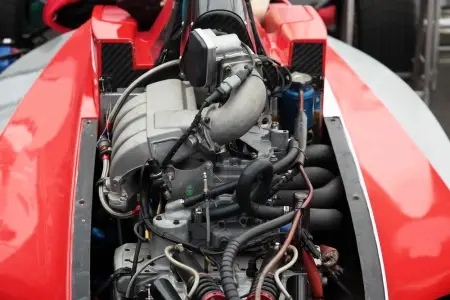
Heat engines are fundamental systems in modern engineering, designed to convert thermal energy into mechanical energy.
This conversion is based on the principles of thermodynamics and is achieved through the transfer of heat from a hot source to a cold sink. Its application is extensive, from vehicles to power plants.
What is a heat engine?
A heat engine is a type of machine that uses thermal energy generated by the combustion of fuels such as gasoline, diesel, or even natural resources such as solar heat, to produce mechanical work.
This process involves the expansion of a fluid, such as a gas or liquid, which generates movement.
How does a heat engine work?
There are many types of thermal engines and each of them has a particular function. However, they all share some common characteristics:
- Heat absorption : The engine receives thermal energy from a high-temperature source. This source can come from the combustion of a fuel (as in internal combustion engines), from the heating of steam (as in steam engines) or even from natural processes (as in Stirling engines).
- Transformation into work : By absorbing heat, the working fluid (such as air, gas, steam or a mixture of these) increases its internal energy. This increase causes its expansion, which is used to perform mechanical work, such as pushing a piston, turning a turbine or moving an axis.
- Heat rejection : After performing work, the fluid loses some of its thermal energy to a low-temperature sink. This allows the engine to return to its initial state and the cycle to repeat itself.
Heat engines operate through repetitive cycles, which can be closed (such as the Carnot or Stirling cycle) or open (such as the Otto and Diesel cycles).
In all cases, the key lies in the temperature difference between the hot source and the cold sink, since this difference is what drives the process.
Types of thermal engines
A heat engine can be classified in many different ways. One of these classifications is:
- Internal combustion engines : Combustion occurs in an internal chamber of the engine itself, where gases are generated that produce the expansion that causes work. For example, car engines.
- External combustion engines : These are those in which combustion takes place outside the engine. The heat released is transmitted to an intermediate fluid. This intermediate flow produces mechanical energy. For example, the steam engine, where the intermediate fluid is water vapour and the combustion site is the boiler, which is outside the engine. Another example would be the thermal engines of nuclear power plants that use nuclear energy to convert it into mechanical energy.
Everyday examples
 Some examples of heat engines are the following:
Some examples of heat engines are the following:
- Diesel engine : Used in trucks, buses, boats and some cars, it works by burning diesel to generate mechanical work.
- Gas turbines : Commonly used in aircraft and power plants, they operate by burning natural gas or liquid fuels.
- Stirling engine : A piston heat engine that operates by expanding and compressing a gas, used in applications such as small power generators and some solar installations.
- Steam engine : Historically used in locomotives and ships, it is based on the expansion of water vapor to move pistons or turbines.
- Rankine Cycle : Used in thermal power plants, where steam is expanded in a turbine to generate electricity.
Differences between an engine and a heat engine
The concept of a heat engine is often confused with that of a heat engine. These terms are related but not exactly the same.
A heat engine is a device or system that works by establishing exchanges of heat and work with its environment.
To achieve this, the machine transforms a substance through a cyclic process or a sequence of operations. At the end of each cycle, the substance returns to its original state and a new cycle begins.
A heat engine can function as an engine, if it converts heat into work, or as a refrigerator or heat pump if it converts work into heat.